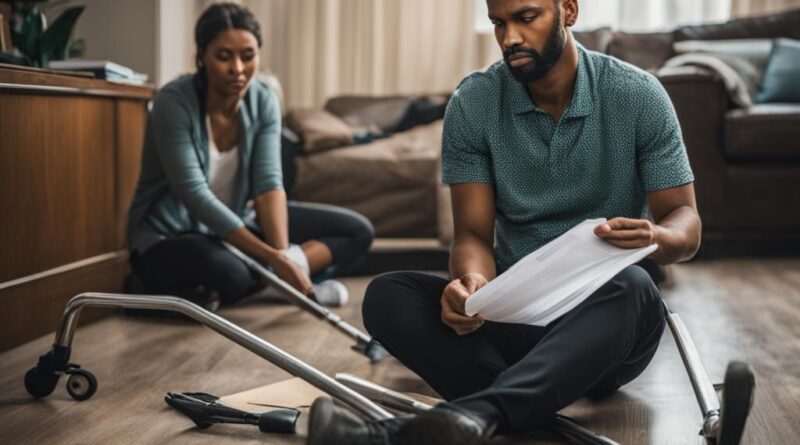What Happens if Someone Gets Hurt on Your Rental Property?
As a landlord, it’s crucial to understand your legal responsibilities for injuries that may occur on your rental property. In the unfortunate event that a tenant or visitor gets hurt, you could be held liable for their injuries and may be required to provide compensation. It’s important to be aware of the potential consequences and take appropriate action to protect yourself and your tenants.
In this article, we will explore what happens when someone gets hurt on your rental property, your liability as a landlord, and the steps you can take to navigate the legal process. From seeking medical attention to gathering evidence and notifying the necessary parties, understanding the process can help you handle the situation effectively.
Key Takeaways:
- If a tenant or visitor gets injured on your rental property, you may be held liable for their injuries and required to provide compensation.
- Promptly seeking medical attention is crucial, as it helps document the extent of the injuries.
- Gathering evidence such as witness statements, photographs of the hazard, and financial documentation can support your case.
- Notifying the landlord and their insurance provider is necessary, and most cases result in a settlement rather than going to trial.
- Understanding your legal responsibilities and taking appropriate action can help protect your rights as a landlord.
When to Consult a Lawyer for Rental Property Injuries
Consulting a lawyer is advisable for tenants who have suffered serious injuries on rental property. While minor accidents can often be resolved through negotiation with the landlord and their insurer, more significant injuries may require legal assistance to ensure fair compensation. There are certain situations that may warrant the need for a lawyer:
- If the medical costs and lost income resulting from the injury exceed $10,000.
- If the injury has caused a permanent disability.
- If there has been severe toxic exposure on the rental property.
A lawyer experienced in personal injury law can provide guidance and help navigate the legal process. They will ensure that tenants understand their rights and take the necessary steps to protect their interests. By consulting a lawyer, tenants can increase their chances of receiving the compensation they deserve for their rental property injuries.
Seeking Medical Attention after an Injury on Rental Property
When an injury occurs on rental property, seeking immediate medical attention is crucial for both personal well-being and the legal process. It is important to prioritize one’s health by promptly addressing any injuries sustained. This not only ensures that the necessary treatment is received but also helps document the extent and severity of the injuries, which can play a crucial role in determining the compensation needed.
Medical reports and testimony from healthcare professionals serve as valuable evidence in rental property injury claims. They provide objective documentation of the injuries, their impact on the victim’s life, and the required medical treatment. These records can support the claimant’s case and strengthen their position when negotiating with the landlord or their insurance provider. Seeking medical attention immediately after the accident also demonstrates responsible action on the part of the injured party, further supporting their claim.
Whether it is a minor injury or a more serious one, seeking medical attention after an accident on rental property is essential for both personal and legal reasons. The documentation gathered from healthcare professionals can provide vital evidence in the pursuit of compensation for medical expenses, lost wages, and other damages resulting from the incident.
| Benefits of Seeking Immediate Medical Attention | Why Medical Documentation is Important |
|---|---|
|
|
Seeking medical attention after an injury on rental property is not only crucial for personal well-being but also serves as vital evidence in the pursuit of compensation for damages.
By promptly seeking medical attention and obtaining the necessary documentation, tenants can strengthen their rental property injury claim and increase the likelihood of receiving fair compensation for their injuries and related expenses. It is important to remember that documenting injuries from the rental property accident is an essential step in the process, providing substantial evidence to support the claim and ensuring a thorough evaluation of the damages suffered.
Gathering Evidence for a Rental Property Injury Claim
When filing a rental property injury claim, gathering evidence is crucial to build a strong case. The evidence collected can help establish liability and support the claim for compensation. Here are some key steps to take when documenting a rental property accident:
1. Record personal impressions and details
As soon as the accident occurs, it’s important to document personal impressions and details of the incident. This can include the date, time, location, and a detailed description of what happened. Be sure to note any hazardous conditions or negligent actions that contributed to the accident.
2. Document financial losses
Keep thorough records of any financial losses resulting from the rental property injury. This can include medical bills, rehabilitation costs, transportation expenses, and lost wages. These documents will help demonstrate the economic impact of the injury and the compensation needed for recovery.
3. Obtain witness statements
If there were witnesses to the accident, it’s important to obtain their statements. Witnesses can provide valuable testimony regarding the cause of the accident, the conditions at the rental property, and any negligent behavior by the landlord. Be sure to gather their contact information for future reference.
4. Capture photographic evidence
Photographs can serve as compelling evidence in a rental property injury claim. Take pictures of the hazard that caused the accident, any visible injuries sustained, and the general condition of the rental property. These images can provide visual proof of the dangerous conditions and help strengthen your case.
| Evidence Types | Description |
|---|---|
| Personal Impressions | Detailed account of the accident, hazardous conditions, and negligent actions. |
| Financial Losses | Thorough record of medical bills, rehabilitation costs, transportation expenses, and lost wages. |
| Witness Statements | Testimony from witnesses regarding the cause of the accident and conditions at the rental property. |
| Photographic Evidence | Pictures of the hazard, injuries, and overall condition of the rental property. |
Gathering evidence is a crucial step in establishing liability and proving the damages caused by a rental property injury. Keep in mind that the more comprehensive and detailed the evidence, the stronger your case will be. Consult with a personal injury lawyer who specializes in rental property accidents to ensure you have all the necessary evidence for your claim.
Notifying the Landlord and Insurance Provider after a Rental Property Injury
After experiencing an injury on a rental property, it is crucial to promptly notify the landlord and contact their insurance provider. This ensures that the necessary steps are taken to address the situation and seek appropriate compensation for the injuries sustained. By notifying both the landlord and insurance provider, tenants can initiate the claims process and begin the necessary discussions to resolve the matter.
When notifying the landlord, it is important to provide clear and concise details about the accident, including the date, time, location, and nature of the injury. This can be done through a written letter or email, as well as by phone, to ensure there is a record of the notification. It is recommended to keep a copy of this communication for reference.
Simultaneously, the tenant should contact the landlord’s insurance provider to report the incident. This can be done by obtaining the insurance company’s contact information from the landlord and reaching out to them directly. During this process, it is essential to provide the insurer with accurate information regarding the injury and any medical treatment received.
By notifying both the landlord and insurance provider promptly, tenants can initiate the necessary actions to address the injury and seek the compensation they may be entitled to for medical expenses, lost wages, pain and suffering, and other damages resulting from the incident.
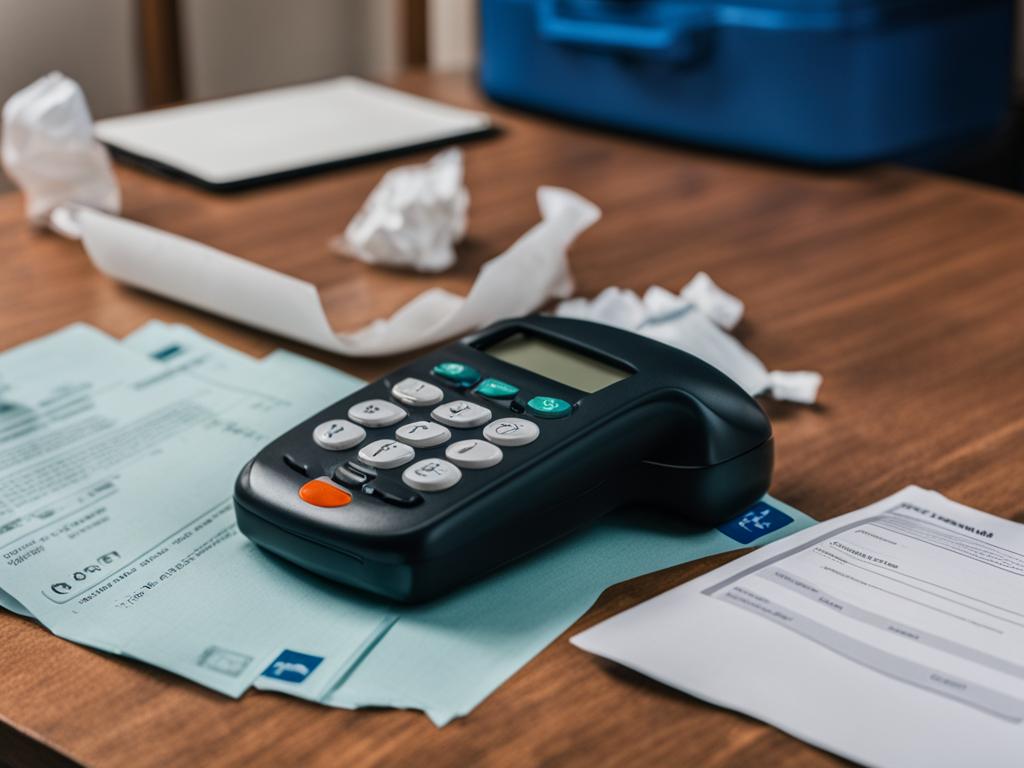
Landlord’s Liability for Rental Property Injuries
In the context of rental property injuries, landlords can be held accountable for their negligence or failure to fulfill their duty of care. Duty of care refers to the legal responsibility of landlords to ensure the safety and well-being of their tenants. When it comes to rental property accidents, landlords have certain obligations to maintain a safe living environment.
Landlords are expected to comply with health and safety laws and regulations, which may include keeping the property in good repair, addressing hazardous conditions promptly, and providing adequate security measures. Failure to meet these obligations can result in the landlord being held liable for injuries that occur on their rental property.
To determine the landlord’s liability, several factors are considered, including the level of control the landlord has over the property, the foreseeability of the accident, the likelihood of serious injury, and the cost of risk reduction. If a landlord’s negligence or failure to fulfill their duty of care contributes to a tenant’s injury, they may be held responsible for compensating the injured party.
Table: Factors Considered in Assessing Landlord’s Liability for Rental Property Injuries
| Factors | Description |
|---|---|
| Control over the property | The degree of control the landlord has over the rental property and its maintenance. |
| Foreseeability | The ability to reasonably foresee the occurrence of an accident or injury. |
| Likelihood of serious injury | An assessment of the potential severity of the injury that could result from the hazard or condition. |
| Cost of risk reduction | The feasibility and cost of implementing measures to reduce the risk of injury. |
It is important for both landlords and tenants to be aware of their respective rights and responsibilities. Tenants should report any hazardous conditions to their landlord promptly, and landlords should address these concerns in a timely manner. By fulfilling their duty of care, landlords can help prevent rental property injuries and protect the well-being of their tenants.
Types of Compensation for Rental Property Injuries
When tenants are injured on rental property, they may be entitled to compensation for their losses. This compensation can include both economic and non-economic damages. Economic damages cover the measurable financial losses that result from the injury, while non-economic damages compensate for intangible losses such as pain and suffering.
Economic Damages
Economic damages provide compensation for the tangible financial impact of a rental property injury. They can include:
- Medical expenses: This includes the cost of immediate medical treatment, ongoing rehabilitation, and any future medical care related to the injury.
- Lost income: If the injury prevents the tenant from working, they may be compensated for the wages they would have earned during their recovery period.
- Loss of earning capacity: In cases where the injury causes long-term or permanent disability, the tenant may be awarded compensation for the reduction in their ability to earn a living.
Non-Economic Damages
Non-economic damages aim to compensate for the emotional and intangible impact of a rental property injury. These damages can include:
- Pain and suffering: This encompasses the physical and emotional distress experienced as a result of the injury, including ongoing pain, discomfort, and mental anguish.
- Scarring or disfigurement: If the injury causes visible scarring or significant changes in the tenant’s appearance, they may be entitled to compensation for the resulting physical and emotional impact.
- Reduction in quality of life: If the injury significantly impairs the tenant’s ability to enjoy life’s activities, they may be compensated for the loss of enjoyment and diminished quality of life.
- Emotional distress: In cases where the injury causes significant psychological trauma, such as post-traumatic stress disorder (PTSD), the tenant may be awarded compensation for their emotional suffering.
It’s important to note that the amount of compensation awarded for rental property injuries varies depending on the specific circumstances of each case. Factors such as the severity of the injury, the impact on the tenant’s life, and the degree of negligence on the part of the landlord will all be taken into account. Seeking legal advice can help tenants understand their rights and pursue the appropriate compensation for their injuries.
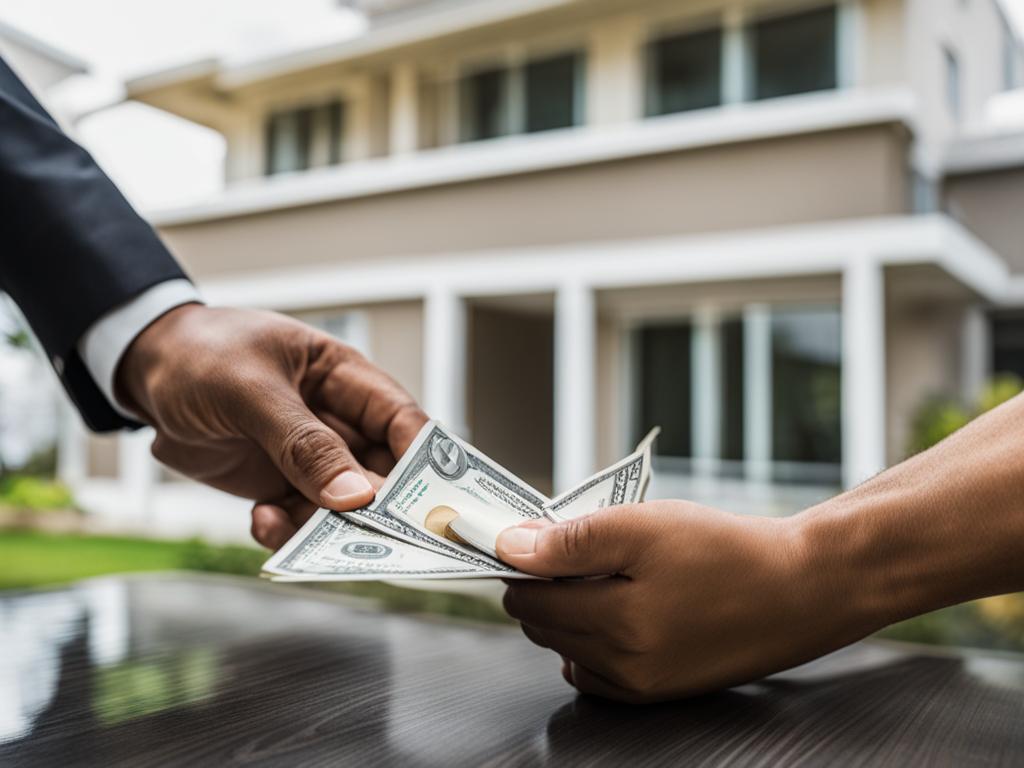
Comparative Fault and Rental Property Injury Claims
When it comes to rental property injury claims, determining the level of fault is an important consideration. In cases where the tenant shares responsibility for the accident or injury, the concept of comparative fault comes into play. Comparative fault refers to the allocation of responsibility between the landlord and the tenant, and it can have a significant impact on the compensation awarded.
In some states, the recovery of damages is based on the percentage of fault assigned to each party. For example, if the tenant is found to be 30% responsible for the accident, their compensation may be reduced by that percentage. In states with a threshold percentage of fault, if the tenant’s responsibility exceeds that threshold, they may not be able to recover any damages.
It is important for tenants to understand their responsibility for rental property injuries and the potential impact on their compensation. Seeking legal guidance can help tenants navigate the complexities of comparative fault laws and protect their rights throughout the claims process.
Tenant’s Responsibility for Rental Property Injuries:
- Failure to exercise reasonable care and caution
- Ignoring warning signs or hazards
- Engaging in reckless behavior
| Tenant’s Fault | Percentage of Fault |
|---|---|
| Tenant Negligence | 30% |
| Landlord Negligence | 70% |
Table: Example of Comparative Fault in a Rental Property Injury Claim
It is crucial for tenants to be aware of their responsibility for rental property injuries. By exercising caution and reporting hazards to the landlord promptly, tenants can help minimize the risk of accidents and protect their own interests.
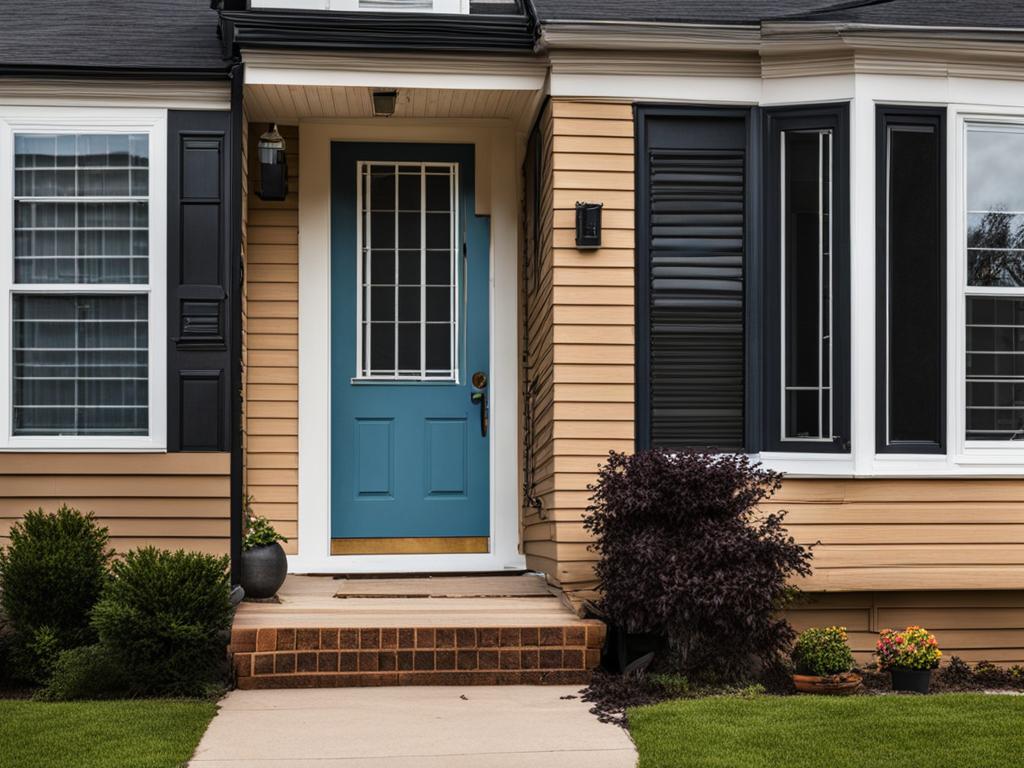
Negligence Per Se and Rental Property Injury Claims
When it comes to rental property injury claims, one important legal concept to consider is negligence per se. This occurs when a landlord violates safety laws that are intended to protect tenants and directly causes an injury. In such cases, the landlord can be automatically held liable for the injuries sustained by the tenant.
Landlords have a legal obligation to comply with health and safety laws, ensuring that their properties meet basic standards for habitability and safety. This includes responsibilities such as installing and maintaining smoke detectors, providing proper lighting in common areas, and addressing potential hazards that could lead to accidents or injuries.
By violating these laws, landlords expose themselves to potential liability if someone is injured on their rental property. Negligence per se allows tenants to hold landlords accountable for their failure to meet these legal obligations and seek compensation for their injuries.
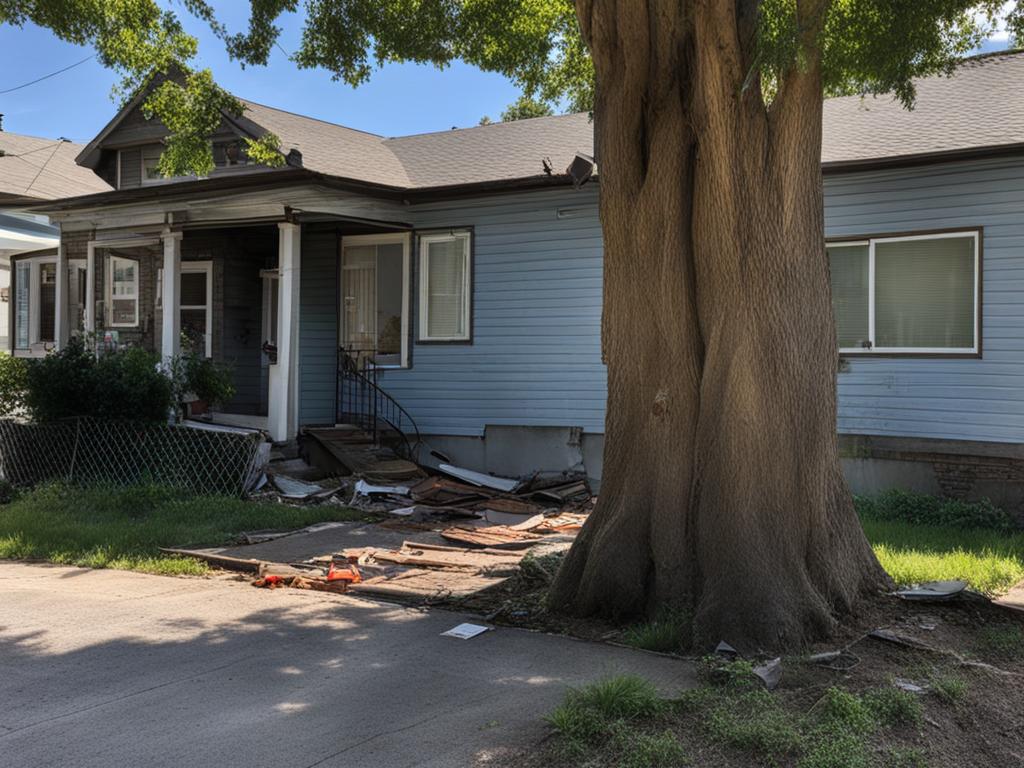
Landlord’s Responsibility for Fit and Habitable Rentals
Landlords are legally obligated to provide rental properties that are fit and habitable for their tenants. This means that the property must meet basic health, safety, and sanitation standards. The implied warranty of habitability assures tenants that their rental property will be in a livable condition throughout the duration of their lease.
Under this implied warranty, landlords have a responsibility to maintain the rental property and make necessary repairs. This includes ensuring that the property has adequate heating, plumbing, electrical systems, and is free from pest infestations. Landlords must also address any structural issues, such as leaks or mold growth, that could pose a risk to the tenant’s health and safety.
| Responsibilities of Landlords for Fit and Habitable Rentals |
|---|
| Providing a safe and clean living environment |
| Maintaining the property’s structural integrity |
| Repairing and addressing health and safety hazards |
| Ensuring essential utilities are in working condition |
| Preventing and resolving pest infestations |
If a landlord fails to meet these responsibilities, tenants may have legal recourse. They can file a complaint with local housing authorities or take legal action to enforce their rights. In some cases, tenants may be entitled to compensation for injuries or damages caused by the landlord’s negligence or failure to maintain a habitable rental property.
Conclusion
Tenants who are injured on rental property have the option to seek compensation through personal injury claims. It is important to follow a few key steps in this process to protect your rights and increase your chances of receiving the compensation you deserve.
The first step is to seek medical attention immediately after the accident. Not only is this crucial for your health and well-being, but it also helps document the extent and severity of your injuries. Medical reports and testimony from healthcare professionals can play a vital role in determining the compensation needed.
Next, gather as much evidence as possible to support your claim. This includes documenting the hazard that caused the accident, obtaining witness statements, and recording any financial losses such as medical bills and lost income. This evidence will strengthen your case and increase the likelihood of a successful claim.
Finally, notify your landlord and their insurance provider of the accident. Prompt communication is necessary, and failure to do so may require legal action. Most rental property injury claims are resolved through settlement negotiations with the insurance provider, so it is important to keep them informed throughout the process.
By following these steps and understanding your legal responsibilities, you can navigate the rental property injury claims process and increase your chances of receiving the compensation you deserve.
FAQ
What happens if someone gets hurt on your rental property?
Tenants who are injured on a landlord’s property can bring a personal injury claim against the landlord for compensation.
When should I consult a lawyer for rental property injuries?
Consulting a lawyer is advisable for tenants who have suffered serious injuries on rental property, such as medical costs and lost income over $10,000, permanent disability, or severe toxic exposure.
When should I seek medical attention after an injury on rental property?
Seeking immediate medical attention is crucial after an injury on rental property to ensure necessary treatment is received and document the extent and severity of the injuries.
What evidence should I gather for a rental property injury claim?
Gathering evidence includes recording personal impressions of the accident, documenting financial losses, obtaining witness statements, and taking photographs or videos of the hazard that caused the accident.
What should I do after a rental property injury in terms of notifying the landlord and insurance provider?
It is important to notify the landlord of the accident and ask them to contact their insurance provider. Prompt communication is necessary, and if the landlord fails to comply, legal action may be necessary.
What is the landlord’s liability for rental property injuries?
Landlords may be held liable for rental property injuries if they were negligent or failed to act in a reasonable manner. They are required to comply with health and safety laws and can be accountable for failure to make repairs or maintain habitable conditions.
What types of compensation can I receive for rental property injuries?
Compensation for rental property injuries can include economic damages (medical bills, lost income) and non-economic damages (pain and suffering, reduction in quality of life).
How does comparative fault affect rental property injury claims?
If the tenant shares responsibility for the rental property injury, the landlord or insurance provider may argue for a reduction in compensation based on comparative fault laws, which vary by state.
What is negligence per se in rental property injury claims?
Landlords can be held automatically liable for rental property injuries if they violate certain safety laws. Negligence per se occurs when the landlord’s violation of a law intended to protect tenants directly causes the injury.
What is the landlord’s responsibility for fit and habitable rentals?
Landlords are obligated to provide fit and habitable rentals that meet basic health and safety standards. Failure to do so can make the landlord responsible for injuries resulting from inferior living conditions.
What steps should I take after a rental property accident?
It is important to seek medical attention, gather evidence, notify the landlord and insurance provider, and consult a lawyer when necessary to protect your rights and receive the compensation you deserve.

